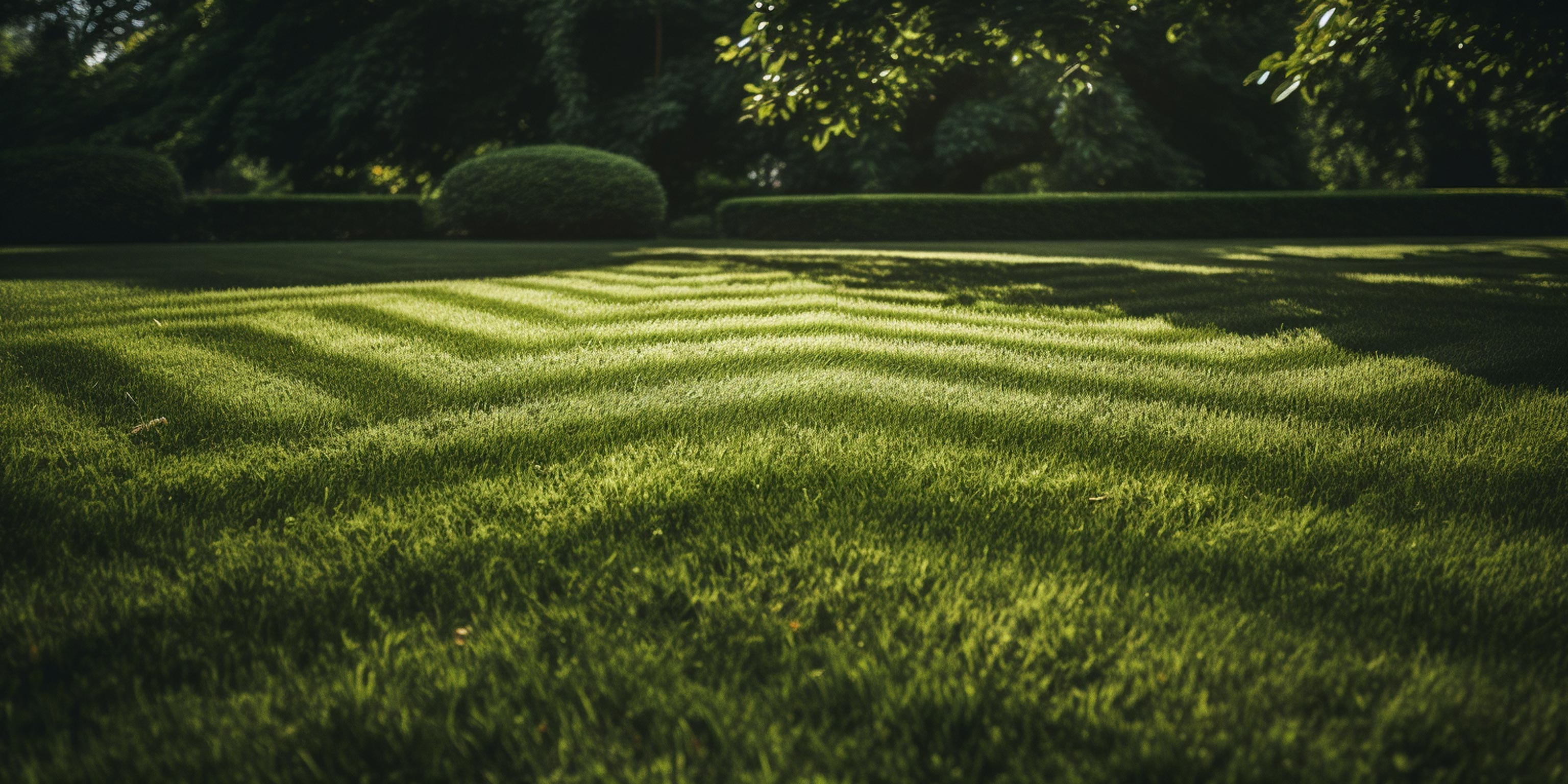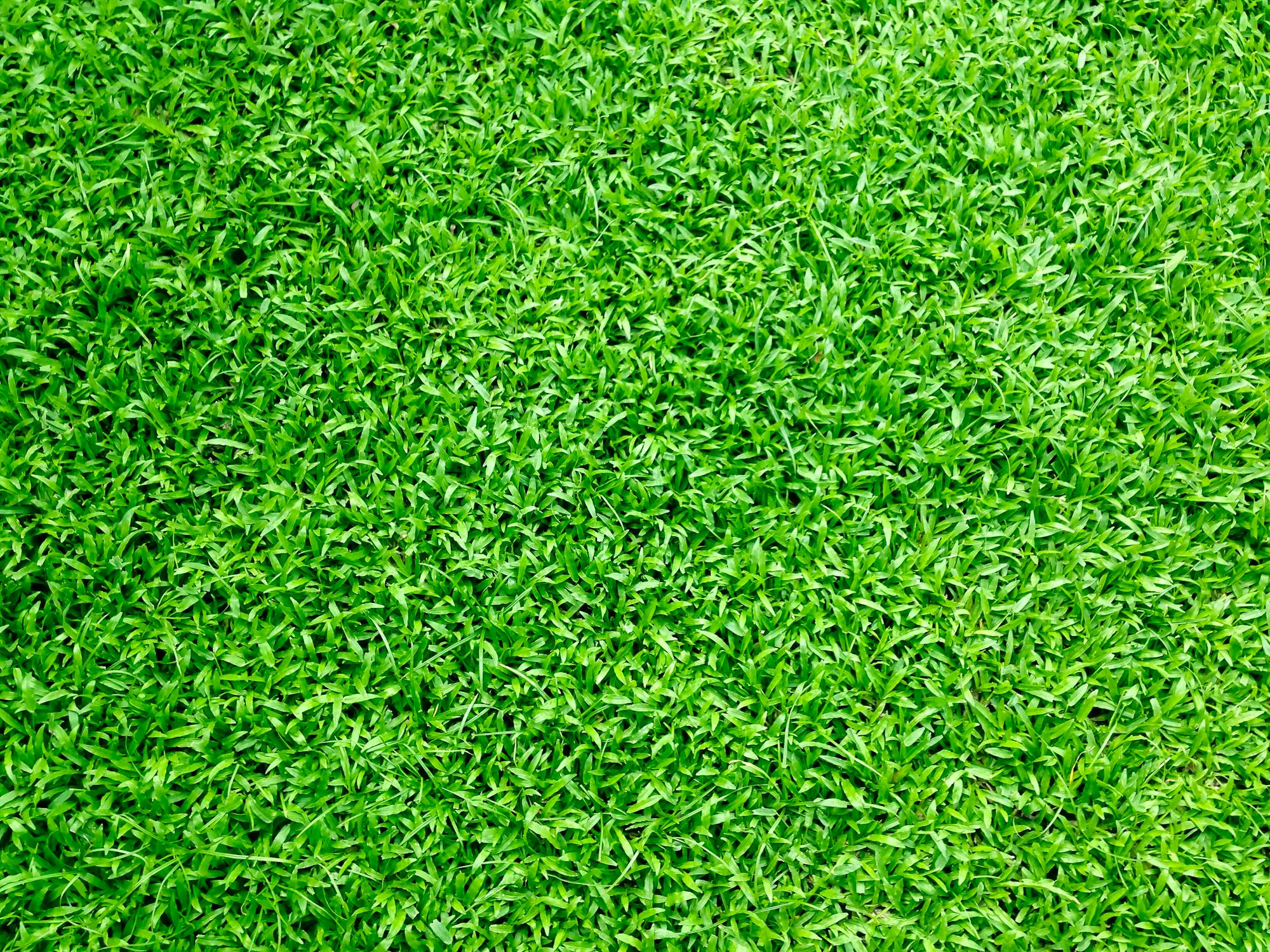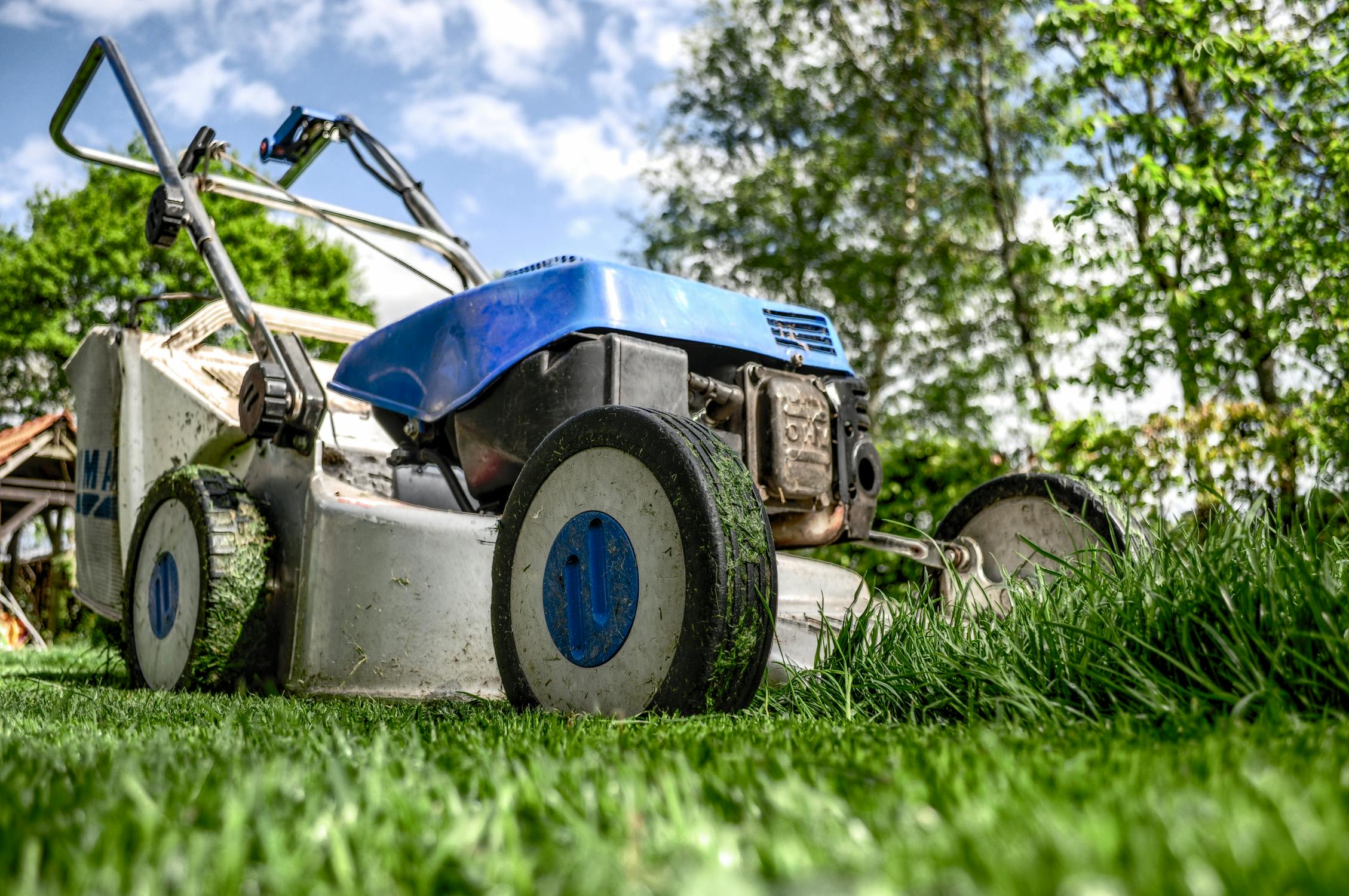
The Ultimate Guide to Mowing Techniques for a Perfectly Manicured Lawn
Published on September 13, 2023 by Harrison Wolfe
A beautifully manicured lawn is the envy of every homeowner. Achieving that perfectly trimmed and healthy green carpet requires more than just a simple run-of-the-mill mowing routine. To unlock the secret to a flawless lawn, you need to master the art of mowing techniques. In this comprehensive guide, we will delve into the best practices and expert tips to help you achieve that picture-perfect lawn you've always dreamed of. Whether you're a seasoned gardener or a novice homeowner, this ultimate guide will equip you with the knowledge and skills to elevate your mowing game to the next level. So, let's dive in and discover the key to a pristine and well-groomed lawn.
Understanding the Importance of Mowing Techniques
Mowing is an essential part of lawn maintenance that significantly impacts the overall health and appearance of your yard. To achieve a perfectly manicured lawn, it is crucial to understand the importance of proper mowing techniques. In this section, we will explore the impact of proper mowing on lawn health and the benefits of using correct mowing techniques.
The Impact of Proper Mowing on Lawn Health
When it comes to maintaining a healthy lawn, mowing plays a key role. Proper mowing techniques contribute to the overall well-being of your grass by:
Encouraging healthy growth: Regular mowing at the correct height stimulates grass to grow thicker and healthier. It helps the grass develop a strong root system, improving its ability to absorb nutrients and water from the soil.
Preventing weed growth: Consistently cutting the grass at the appropriate height helps prevent weeds from taking over your lawn. Most weeds cannot compete with well-maintained turfgrass, and frequent mowing helps keep them in check.
Minimizing pests and diseases: By maintaining the right mowing height, you can improve air circulation and sunlight penetration, which reduces the risk of fungal diseases. Additionally, mowing removes the top growth of pests like ticks and fleas, minimizing their presence in your yard.
Benefits of Using Correct Mowing Techniques
Using the correct mowing techniques offers several benefits that go beyond just the health of your lawn. Let's explore some of these advantages:
Enhanced aesthetics: Proper mowing techniques give your lawn a neat and tidy appearance. By consistently cutting the grass at the right height, you create a uniform and well-manicured look that enhances the curb appeal of your property.
Stress tolerance: Regular mowing at the appropriate height promotes stress tolerance in your grass. By removing only the top third of the grass blades, you ensure that the remaining foliage can efficiently photosynthesize and provide energy to the plant. This helps your lawn withstand periods of drought, heat, or cold better.
Reduced thatch buildup: Thatch is a layer of partially decomposed organic matter that accumulates between the soil surface and the base of the grass blades. Proper mowing techniques help prevent excessive thatch buildup, ensuring healthy growth and minimizing the need for dethatching.
Time and cost savings: By adopting correct mowing techniques, you can save time and money in the long run. Regular mowing prevents the need for drastic cuts or intensive lawn care treatments, reducing the overall maintenance requirements of your lawn.

Understanding the importance of mowing techniques is crucial for achieving a perfectly manicured lawn. By implementing proper techniques, you can improve the health of your grass, enhance the overall aesthetics of your yard, and save time and money in the process. In the next section, we will delve into different mowing techniques you can employ for optimal results.
Choosing the Right Mowing Equipment
Before you begin mowing your lawn, it's crucial to have the right equipment in order to achieve that perfectly manicured look. In this section, we will discuss the different types of lawn mowers available and guide you in selecting the appropriate one for your yard.
Understanding Different Types of Lawn Mowers
There are several types of lawn mowers on the market, each designed for different lawn sizes and terrains. Understanding the differences between them will help you make an informed decision:
Push Reel Mowers: These traditional mowers require manual pushing and are ideal for small, flat lawns. They produce a clean cut and are environmentally friendly as they don't require any fuel or electricity.
Gasoline-Powered Rotary Mowers: These popular mowers are suitable for medium to large-sized lawns. They feature a rotating blade that cuts grass with a horizontal spinning motion. Gasoline-powered mowers are powerful and can handle various grass types and terrains.
Electric Rotary Mowers: These mowers are a great option for small to medium-sized lawns. They are powered by electricity, either with a cord or a rechargeable battery. Electric mowers are quieter and emit no harmful emissions, making them eco-friendly choices.
Riding Mowers: Designed for large lawns and commercial properties, riding mowers allow you to sit and comfortably navigate your lawn. They are powered by gasoline or electricity and typically come with wider cutting decks, making them more efficient for larger areas.
Selecting the Appropriate Lawn Mower for Your Yard
To choose the right lawn mower for your yard, consider the following factors:
Lawn Size: Assess the size of your lawn to determine the appropriate cutting deck width. Smaller lawns require narrower cutting decks, while larger lawns benefit from wider decks that can cover more area in less time.
Terrain: If your yard has hills, slopes, or uneven surfaces, opt for a mower with enhanced maneuverability and stability. Certain models have features like front-wheel drive, rear-wheel drive, or even all-wheel drive to tackle challenging terrains more effectively.
Grass Type: Different grass types have different cutting requirements. For instance, if you have thick, tough grass, a more powerful mower with adjustable cutting height settings may be necessary. Consider a mower that offers flexibility in adjusting the cutting height.
Maintenance: Determine the level of maintenance you are willing to undertake. Some mowers require more maintenance than others, such as blade sharpening or regular oil changes. Be sure to choose a mower that aligns with your maintenance preferences.
Budget: Lastly, consider your budget. Lawn mower prices can vary significantly depending on the type and features. Set a budget and choose a mower that offers the best value for your money while meeting your specific needs.
It's essential to carefully evaluate these factors to ensure you select a lawn mower that can efficiently and effectively maintain your lawn.
Remember, choosing the right equipment is the first step toward achieving a perfectly manicured lawn. Once you have your mower, it's time to move on to the next section and delve into the mowing techniques that will help you achieve outstanding results.

Before you begin mowing your lawn, it's crucial to prepare the area properly for optimal results. This section will guide you through two important aspects of lawn preparation: clearing debris and obstacles, and adjusting the mower height.
Clearing Debris and Obstacles
Clearing debris and obstacles from your lawn is essential for a smooth and efficient mowing experience. Here are some steps to follow:
Remove large debris: Start by removing any large branches, rocks, or other objects that may hinder the mower's movement. This will prevent damage to the mower blades and ensure an even cut.
Clear small debris: Next, take a walk around the lawn and clear any smaller debris, such as twigs, leaves, or pet waste. This will prevent the mower from getting clogged or spreading debris all over the lawn.
Check for hidden obstacles: Look out for any hidden obstacles, such as sprinkler heads, tree stumps, or uneven terrain. Mark these areas with flags or other visible markers to avoid damaging your mower or causing accidents during the mowing process.
Adjusting Mower Height for Optimal Cutting
Properly adjusting the height of your mower is crucial for achieving a perfectly manicured lawn. Follow these guidelines to ensure the optimal cutting height:
Know your grass type: Different types of grass have different ideal cutting heights. Research the specific grass type in your lawn to determine the recommended cutting range. For example, Bermuda grass is typically cut at a shorter height compared to Kentucky bluegrass.
Set the initial height: Start by setting your mower's cutting height to the highest recommended setting for your grass type. This prevents cutting the grass too short in the initial mow, which can stress the grass and leave it vulnerable to diseases and weed growth.
Gradually lower the height: Over the course of multiple mowing sessions, gradually lower the cutting height. Avoid cutting more than one-third of the grass blade's length at once to maintain a healthy lawn. Gradual height reduction encourages deeper root growth and promotes a denser, lush appearance.
Adjust for season and conditions: Adjust the cutting height based on the season and weather conditions. During dry periods, slightly raise the cutting height to provide shade and protect the roots from heat stress. Conversely, in cooler seasons, you can lower the cutting height for a neater appearance.
Remember to check your mower's manual for specific instructions on adjusting the cutting height, as different models may vary.
By following these guidelines and properly preparing your lawn for mowing, you'll set the stage for a successful and satisfying mowing experience. With a clear and obstacle-free lawn, adjusted to the optimal cutting height, you'll be on your way to achieving a perfectly manicured yard.
Mowing Patterns for a Professional Look
A well-manicured lawn is the hallmark of a beautiful landscape. Achieving that professional look requires not just proper mowing techniques, but also the use of different mowing patterns. By varying your mowing patterns, you can create visually appealing effects that will make your lawn stand out from the rest. In this section, we will discuss the overview of different mowing patterns and guide you on how to choose the right pattern for your lawn.

Overview of Different Mowing Patterns
Using different mowing patterns adds depth and texture to your lawn, enhancing its overall appearance. Here are some common mowing patterns you can consider:
Stripes: This classic pattern is achieved by mowing in straight lines, alternating the direction with each pass. Stripes can give your lawn a formal, elegant look, similar to what you see in professional sports fields.
Diagonal Rows: Mowing the lawn diagonally creates a unique and sophisticated look. This pattern is ideal for larger lawns, as it showcases the expanse of your yard and adds a sense of grandeur.
Checkerboard: The checkerboard pattern is created by mowing in alternating diagonal directions, creating a grid-like appearance. This pattern is popular for smaller yards and can give your lawn a visually interesting and playful look.
Circular: Mowing in concentric circles can give your lawn a polished, artistic look. This pattern works well for small or medium-sized yards and can create a visually pleasing focal point in your landscape.
Waves: Mowing in a wavy pattern is a great way to add a touch of creativity to your lawn. This pattern is achieved by gently curving your mowing path, giving your lawn a flowing and organic appearance.
Choosing the Right Pattern for Your Lawn
When selecting a mowing pattern, consider the following factors:
Lawn Size: The size of your lawn will impact your choice of pattern. Larger patterns, such as diagonal rows or circular designs, are better suited for spacious yards, while smaller patterns, like stripes or checkerboards, work well in more confined spaces.
Landscape Features: Take into account any landscape features you want to highlight or downplay. For example, a circular pattern can draw attention to a central feature like a fountain or flower bed, while diagonal rows can accentuate the length of your property.
Personal Preference: Ultimately, your personal taste and the overall style of your landscape should guide your choice of mowing pattern. Consider what will complement the existing elements of your outdoor space and reflect your individual style.
Remember to vary your mowing patterns regularly to prevent grass from developing a permanent lean. By experimenting with different patterns, you can keep your lawn looking fresh, vibrant, and professionally maintained.
Using different mowing patterns can add visual interest and give your lawn a professional look. In the next section, we will delve into the importance of regular mowing schedules to keep your lawn in optimal condition.
Techniques for a Perfect Cut
Avoiding Scalping and Uneven Cutting
Scalping and uneven cutting can ruin the aesthetic appeal of your lawn. To achieve a perfectly manicured lawn, it's important to avoid these common mowing issues. Scalping occurs when you cut the grass too short, exposing the bare soil beneath and leaving the lawn vulnerable to weeds and diseases. Uneven cutting, on the other hand, results in an unkempt appearance, with patches of longer and shorter grass. Follow these tips to achieve a consistently even cut:
Adjust your mower height: Set your mower blades to a suitable height based on the grass type. Different grass species have specific recommended cutting heights. For example, cool-season grasses like Kentucky bluegrass should be mowed between 2.5 to 3.5 inches, while warm-season grasses like Bermuda grass fare better when mowed between 1.5 to 2.5 inches.
Avoid cutting too much at once: If your grass has grown excessively long, it's best to gradually reduce its height over a few mowing sessions. Cutting off more than one-third of the grass blade at a time can shock the grass and lead to scalping.
Maintain a sharp blade: Dull mower blades can tear the grass instead of cleanly cutting it. Regularly sharpen your mower blades to ensure a clean and precise cut every time. A well-maintained blade improves overall lawn health and reduces the risk of scalping and uneven cutting.
Remember, a consistently even cut not only enhances the visual appeal of your lawn but also promotes healthier grass growth.
The Benefits of Mulching
Mulching is a technique that involves leaving the grass clippings on the lawn after mowing instead of collecting and disposing of them. This method offers several benefits for your lawn's health and appearance:
Natural fertilization: Grass clippings are rich in nutrients, acting as a natural fertilizer for your lawn. As they decompose, they release nitrogen, potassium, and phosphorus back into the soil, replenishing essential nutrients required for healthy grass growth.
Improved moisture retention: Mulched grass clippings form a protective layer on the soil's surface, reducing moisture evaporation. This helps your lawn retain water for longer periods, improving its resistance to drought and reducing the need for excessive watering.
Weed suppression: Mulching can help suppress weed growth by creating a barrier that inhibits weed seeds from reaching the soil and germinating. The mulch layer also shades the soil, preventing weed seedlings from receiving adequate sunlight for growth.
Time-saving and cost-effective: Mulching eliminates the need for bagging and disposing of grass clippings, saving you time and effort. Additionally, it reduces the cost of fertilizers since the natural decomposition of the clippings provides valuable nutrients to the soil.
By adopting mulching as part of your mowing routine, you can promote a healthier lawn while reducing your environmental impact and lawn maintenance expenses.

Proper Maintenance for Mowing Equipment
Proper maintenance is essential to ensure the longevity and optimal performance of your mowing equipment. Regular blade sharpening and replacement, as well as cleaning and storing your mower correctly, are crucial aspects of equipment maintenance. By following these practices, you can keep your mowing equipment in top shape and achieve a perfectly manicured lawn.
Regular Blade Sharpening and Replacement
One of the key maintenance tasks for your mowing equipment is regular blade sharpening and replacement. Dull blades can tear grass instead of cutting it cleanly, leading to uneven cuts and potential damage to your lawn. Here are some important points to consider when it comes to blade maintenance:
- Sharpening frequency: Sharpen your mower blades at least once or twice a season, depending on how frequently you mow your lawn. A general rule of thumb is to sharpen them every 20-25 hours of mowing time.
- Proper sharpening technique: Use a grinding wheel or file to sharpen the blades to the manufacturer's recommended angle. Take care to maintain the correct blade balance during the sharpening process.
- Blade replacement: It's important to inspect your mower blades regularly for signs of wear, such as cracks, nicks, or significant blade dullness. If you notice any damage or if the blades are beyond sharpening, it's time to replace them with new ones.
By keeping your mower blades sharp and in good condition, you'll achieve cleaner cuts that promote healthy grass growth and enhance the overall appearance of your lawn.
Cleaning and Storing Your Mower
Properly cleaning and storing your mower not only helps maintain its performance but also extends its lifespan. Here are some important tips to remember when it comes to cleaning and storing your mower:
- Cleaning after each use: After each mowing session, make sure to remove any grass clippings, debris, and dirt that may have accumulated on the mower. Use a brush or a pressurized water hose to clean the blades, undercarriage, and other parts of the mower.
- Air filter maintenance: Regularly check and clean the air filter according to the manufacturer's instructions. A dirty air filter can restrict airflow, affecting the mower's performance.
- Fuel system care: If your mower has a fuel system, make sure to drain any remaining fuel at the end of the mowing season to prevent fuel deterioration and potential damage to the engine.
- Oil change and lubrication: Refer to your mower's manual for oil change intervals and proper lubrication points. Regular oil changes and lubrication help keep the engine running smoothly and prevent excessive wear on moving parts.
- Proper storage: When storing your mower for an extended period, ensure that it is in a clean, dry, and well-ventilated area. Consider using a protective cover to shield it from dust and moisture. Additionally, make sure to disconnect the spark plug wire to prevent accidental starting.
By following these cleaning and storage practices, you can preserve the condition of your mower and be ready for the next mowing season.
Remember, proper maintenance of your mowing equipment is key to achieving a perfectly manicured lawn. Regularly sharpening or replacing blades, as well as cleaning and storing your mower correctly, will help you maintain a well-functioning machine and ensure optimal performance for years to come.

Conclusion
In conclusion, mastering the art of mowing techniques is crucial for achieving and maintaining a perfectly manicured lawn. By implementing the strategies discussed in this ultimate guide, you can enhance the overall appearance of your yard and showcase a well-maintained outdoor space. Remember to choose the right mowing height, vary your mowing patterns, keep your equipment in top condition, and follow a regular mowing schedule. These simple yet effective techniques will not only improve the health and aesthetics of your lawn but also contribute to the overall curb appeal of your property. So, go ahead and put these tips into practice to transform your lawn into a beautiful green oasis that you can be proud of.